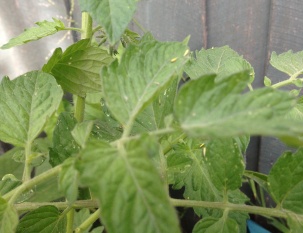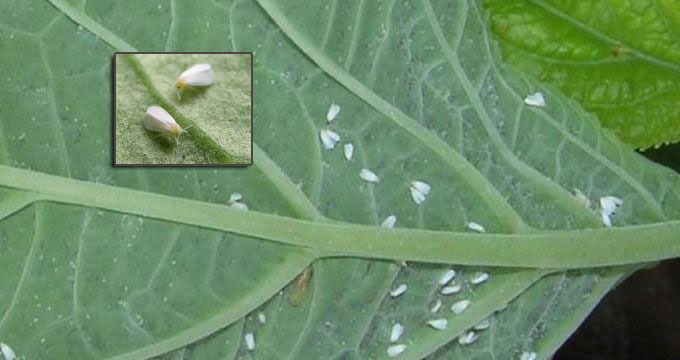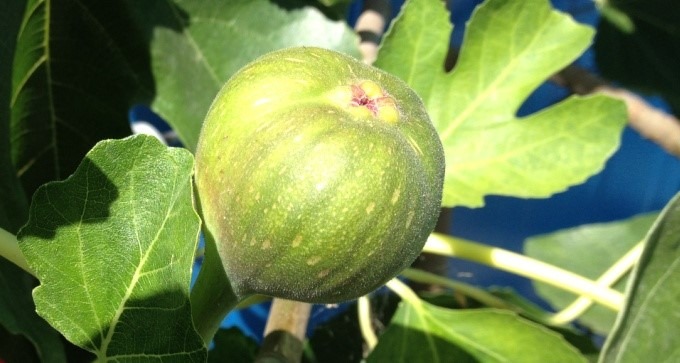Whitefly
Though they look like tiny white flies or moths theses little sap suckers are a relative of aphids and mealy bugs. You know whitefly has moved into your patch when you are greeted with a cloud of white each time you water or disturb your plants. Whitefly like company so if you have one you have hundreds or even thousands!
There are around 20 different species of Whitefly in Australia but the two most common species found in both home gardens are:
• the greenhouse whitefly (Trialeurodes vaporariorum)
• the silverleaf whitefly (Bemisia tabaci).
Both species look almost identical, but the silverleaf variety is a slightly smaller and a little more yellow in colour than the greenhouse whitefly.
Whitefly are sap sucking insects that attack a wide range of plants, including your veggie crops. And can these little sap suckers leave a trail of damage behind? Whitefly reproduce rapidly by laying eggs on the underside of leaves. Both the adult and nymph form of whitefly feed on leaf, bud and stem sap. Affected plant parts turn yellow and streaky. Leaves can curl and wilt which affects plant growth. Whitefly can also spread viruses from plant to plant as they feed.
Whitefly also excrete honeydew which can lead to infestations of sooty mould, a fungal disease that looks like black charcoal on the leaf. The saliva of the silverleaf whitefly contains a toxin that may cause further damage to the plant.
White fly are most prevalent in late spring and early summer but numbers will naturally decline in the cold of winter. However in warmer climates they are present throughout the year.
Controlling Whitefly
Whitefly are prolific breeders with a short lifecycle. Eradication of heavy infestations can be a challenge, but employing a combination of control methods to reduce numbers in the short term will lessen plant damage.
- Yellow Sticky traps – Whitefly are
 attracted to the colour yellow so by hanging yellow sticky traps near your affected plants will help control their populations. You can purchase yellow traps from nurseries and garden suppliers or you can make your own at home using laminated yellow paper or plastic smeared with a sticky substance like Paraffin Oil or Vaseline. You need about one trap in every 3m x 3m area. Make sure you regularly disturb affected plants so the Whitefly swarm and fly into the traps. BUT BEWARE! These traps also attract beneficial insects so are NOT the method of choice!
attracted to the colour yellow so by hanging yellow sticky traps near your affected plants will help control their populations. You can purchase yellow traps from nurseries and garden suppliers or you can make your own at home using laminated yellow paper or plastic smeared with a sticky substance like Paraffin Oil or Vaseline. You need about one trap in every 3m x 3m area. Make sure you regularly disturb affected plants so the Whitefly swarm and fly into the traps. BUT BEWARE! These traps also attract beneficial insects so are NOT the method of choice! - Get the dust buster out and vacuum! Probably only effective at controlling small numbers and make sure you use low suction so your vac won’t damage the plant you’re trying to protect. Empty the dust bag contents into a labelled plastic bag and freeze before you discard to ensure the captured bugs don’t head back into the garden. Yes, its fiddly and slightly eccentric but may be worth experimenting with!
- Hosing off and/or constant disturbance for 3 or more days in a row. Shake, rattle and hose those plants to annoy your unwanted guests. The idea is to cause enough disturbances to encourage whitefly to move on from your plants. Again probably only effective in controlling small numbers and unfortunately may not make you popular with your neighbours who are now hosting your whitefly problem!!
- Attract natural predators such as Ladybirds, lacewings and hoverflies. These beneficial insects will all devour whitefly nymph and adult whitefly. Attract these beneficial insects to your garden by planting companion plants like marigolds and alyssum near your precious vegie crops. And don’t use chemical sprays that will also kill these good insects.
- Home made or commercial organic natural sprays – Soap, botanical oils or even garlic and chilli sprays may deter Whitefly by adding another line of defence to your arsenal. However to be effective they need to come in contact with the insect which is difficult when they are airborne! However the nymphs are more vulnerable as they are on the undersides of leaves so this is where you need to direct your spray mist.
In enclosed greenhouse situations, infestations of whitefly can be controlled by using exclusion netting in doorways or by introducing the predatory wasps Encarsia formosa. They are available from a number of commercial suppliers.
Peach Leaf Curl
Peach leaf curl is a virulent and resistant fungal disease that appears on the leaves of fruit trees in early spring. As the fungus Taphrina deformans lies dormant on stems, branches and then buds over winter, any effective treatment regimen must begin when an affected tree loses its leaves in late autumn or early winter.
Plants affected
Peach leaf curl predominately affects stone fruits, peaches and nectarines. It can also infect apricots and almonds.
Damage
 The emerging leaves on your tree will appear thick and lumpy, taking on a blistered appearance. Foliage can change in colour to pale green, pink or sometimes purple.
The emerging leaves on your tree will appear thick and lumpy, taking on a blistered appearance. Foliage can change in colour to pale green, pink or sometimes purple.
Occasionally a white bloom may appear on the leaves and they will then brown off and fall.
Infected flowers will fall from the tree reducing fruit production and the fruit can also be infected, causing reddish pimples followed by fruit drop.
Left untreated, Peach Leaf Curl will continue to affect the tree year after year and become increasing worse.
Control
For the best results in controlling Peach Leaf Curl, use a number of control methods together. Complete irradication can be challenging, but the impact on the tree and fruit production can be minimised.
- Clean up any fallen leaves from previous infections and dispose of in the bin to minimise hiding places for the fungus spore.
- Spray with a low environmental impact copper oxychloride or lime sulphur product and winterwash (see the Winter Washing Fruit Trees page for more). Lime sulphur is preferable since it doesn't lead to a build up of copper in the soil. This is a preventative spray, and has to be done in winter before bud burst and well BEFORE the symptoms appear.
- If a tree is already infected, remove all distorted leaves and fruit and destroy.
- Choose stone fruit varieties that have a lower susceptibility to the fungus.
- Feed your soil with slow release organic fertilisers and soil conditioners, as well as regular watering regimes, to ensure it is healthy and can recover from infection.
PHOTOS: Elaine Shallue
Figs
The fabulously delicious fig Ficus carica– known to the Egyptians as the “Tree of Life” – is a wonderful addition to most backyards (and kitchens). A large, deciduous, well-shaped tree, the fig is an excellent shade specimen for small to medium sized backyards. They can be trimmed and trained into a manageable size, grown as a hedge or even espaliered like the one on the wall of the SGA office (pic below).

Figs are a versatile fruit, eaten fresh, glazed, dried, poached and cooked, and they are a very healthy option as well. Figs are high in fibre and vitamin C and the sap of fig trees is reportedly useful in getting rid of warts! (Some people are allergic to the sap though use caution when handling it for the first time.) Figs are said to be an aphrodisiac too!
Another interesting fact about Figs is that they flowers on the inside – the pulp inside the fig fruit is actually lots of tiny little flowers. Many figs require a wasp to pollinate the flowers through the small white eye on the end of the fruit, so think very carefully before using chemicals and traps in your backyard that may harm these wonderful wasps. Most commercially available varieties of figs including those listed below are self fertile though.
As a sub tropical tree, the fig prefers a Mediterranean climate with warm to hot summers and cooler winters so it is very suited to most areas of Australia. The hardy fig is quite adaptable though and will cope with cold winters, though if you live in areas prone to heavy frosts you may need to protect young trees. Figs are reasonably drought tolerant, though lack of water can affect fruit production. Fig trees will also grow and fruit well in large pots too.
 The secret to a good fig is a rich, free-draining soil with a neutral pH. A good layer of straw mulch and plenty of organic matter (like home-made compost) will also give your tree a boost. Figs don’t like wet feet and are often are planted in raised beds or mounds to ensure good drainage. Choose a sunny spot with not too much wind, in a position where you can enjoy the summer shade provided by this top tree. A full grown fig can be 3 meters high and up to 5 meters wide in the canopy so take this into account when selecting a spot.
The secret to a good fig is a rich, free-draining soil with a neutral pH. A good layer of straw mulch and plenty of organic matter (like home-made compost) will also give your tree a boost. Figs don’t like wet feet and are often are planted in raised beds or mounds to ensure good drainage. Choose a sunny spot with not too much wind, in a position where you can enjoy the summer shade provided by this top tree. A full grown fig can be 3 meters high and up to 5 meters wide in the canopy so take this into account when selecting a spot.
Many fig trees varieties crop twice each. The first (or breba) crop  form on last years wood. You can often see the tiny fruits dormant on the tree over winter. A heavier crop is then produced later in summer when the new growth develops. Fruit normally forms in the leaf axils on new wood, so pruning a fig is a straightforward and infrequent task. Give it a light trim in winter to stimulate new growth for fruiting, but leave some old wood on the tree for the breba fruiting. Dead and diseased wood should be removed and more mature trees may need heavier pruning to encourage new growth.
form on last years wood. You can often see the tiny fruits dormant on the tree over winter. A heavier crop is then produced later in summer when the new growth develops. Fruit normally forms in the leaf axils on new wood, so pruning a fig is a straightforward and infrequent task. Give it a light trim in winter to stimulate new growth for fruiting, but leave some old wood on the tree for the breba fruiting. Dead and diseased wood should be removed and more mature trees may need heavier pruning to encourage new growth.
Harvesting is the best part of growing a fabulous fig. Fruit should be picked when they are slightly soft to the touch and smelling sweet. Figs will NOT continue to ripen once they have been removed from the tree, so pick them when you need them and handle them with care as they can bruise easily.
As if all that wasn’t enough for this versatile, hardy, delicious tree - fig trees are easy to propagate too. Take hardwood cuttings in late autumn, about 20 – 30cm long with several nodes. Plant the cutting in a free draining propagation mix, making sure you cover a couple of the nodes.
Pests of fig trees are fairly minimal, but you may have to fight with the birds and possums to be the first at the figs! Invest in some netting to keep these voracious feeders away but be sure to check it regularly to ensure there are no creatures trapped in it. Though they are considered very hardy trees, figs can also be affected by a number of other pests and diseases.
Queensland fruit fly (Dacus tryoni) - is a major pest in many areas of NSW. Small, brown/black flies with distinctive cream to yellow markings on the mid-section, the female lays eggs in ripening fruit which then spoils. Pheromone traps. attract and kill male flies. Fallen fruit should be destroyed.
Fig blister mite (Aceria ficus) - colourless to white, blister mites attack inside the fruit leaving rust coloured dry patches that affect eating quality. You won’t know they are there till you harvest the first fruits. If you find damaged fruit, destroy it to prevent subsequent fruits being infected as they ripen.
Fig rust and Anthracnose - both fungal diseases that affect mainly coastal areas, Fig rust produces powdery yellow spots form on the leaves. Anthracnose forms small brown to black spots, which develop into a larger patch of infection. With both diseases, leaves will turn yellow and then fall. As with most fungal disease, copper-based fungicides are normally used for control.
Fig mosaic virus - affects leaf pigment and causes a mottled pattern on the leaf. Affected plants need to be destroyed.
Other problems that are not specific to fig but can affect them include root knot nematode (Meloidogyne spp.) and dried fruit beetle (Carpophilus spp.)
Fabulous Figs to try
Black Genoa: Excellent flavour. A Large, conical, greenish purple skin and dark red, rich sweet flesh. A reliable, heavy cropper with two crops a year. Vigorous, spreading tree. Fruits in February for three months. Use for fresh fruit, drying and jam. Self-Pollinating.
Brown Turkey: Large, conical, brown skin, pink sweet-flavoured flesh. Vigorous, productive and hardy. Fruits early Summer and late autumn. Fresh fruit, drying and jam. Self-Pollinating.
Preston Prolific: Very thick flesh, creamy white and juicy, with sweet flavour. Extremely vigorous and late cropping. Harvested February to March.
White Adriatic: A vigorous Fig variety, usually producing one crop a year (the Breba crop can be very light). The fruit is good for drying, but is also delicious fresh. Brown green skin over pink flesh with excellent sweet flavour. Self-Pollinating.
White Genoa: Large, conical, yellow-green skin, red-pink sweet, mild flavoured flesh. Suits cooler areas. Lighter cropper than other varieties. Harvest early Summer and late autumn. Fresh fruit, drying and jam. Self pollinating. 
Photos;
Tracey Martin
Resources: http://www.dpi.nsw.gov.au
SGA Footprint Flicks - We Love Tools

The behind-the-scenes tour of where it all happens – the toolshed. Get to know the colourful characters who make your garden dream a reality.
SGA Footprint Flicks - Renter's Guide to Sustainable Gardening

If you only ever venture into your garden for a quick hack before property inspection, then this film's for you. Find out how to grow plants in a pot, up a wall, in a shoe and on a budget... without jeopardizing your bond. Create a moveable vegie patch and cultivate much more than couch potatoes. Tips and tricks for low cost, temporary and mobile gardening that all gardeners can use. There's even something for the indoor gardener in this priceless pic.
SGA Footprint Flicks – Mulch Ado about Nothing

Wrap your soil up in a blanket of mulch to conserve water use, add nutrients, suppress weeds and enhance habitat. But what to use where? Meander through a multitude of mulches with Helen as she show us what to goes where, what’s sustainable, what’s not and how to avoid common problems when mulching. From straw, to stone, to living mulches, this flick makes mulch ado about mulching and will have your garden beds snug and warm in no time.
SGA Footprint Flicks – Lord of the Bins (Part 2)
 Lord of the Bins is a hard-hitting, 2 part expose of the relationships in your compost bin. Things really start to warm up in part two as we delve deeper into the compost heap. Helen shares her own special family recipe for sweet smelling compost, no science degree required. Find out what makes your compost sing and what should go in the rubbish bin, it's all about the balance in this relationship. Who would have thought that reducing your carbon footprint could be so steamy!
Lord of the Bins is a hard-hitting, 2 part expose of the relationships in your compost bin. Things really start to warm up in part two as we delve deeper into the compost heap. Helen shares her own special family recipe for sweet smelling compost, no science degree required. Find out what makes your compost sing and what should go in the rubbish bin, it's all about the balance in this relationship. Who would have thought that reducing your carbon footprint could be so steamy!
SGA Footprint Flicks - Lord of the Bins (Part 1)
 Lord of the Bins is a hard-hitting, 2 part expose of the relationships in your compost bin. In part one Helen reveals the uncensored story of decomposition that's smouldering in the backyard compost bin. Capture carbon, improve your soil, feed a worm, reduce household waste and discover why a hot and healthy relationship with your compost is an essential part of being a planet conscious gardener.
Lord of the Bins is a hard-hitting, 2 part expose of the relationships in your compost bin. In part one Helen reveals the uncensored story of decomposition that's smouldering in the backyard compost bin. Capture carbon, improve your soil, feed a worm, reduce household waste and discover why a hot and healthy relationship with your compost is an essential part of being a planet conscious gardener.





